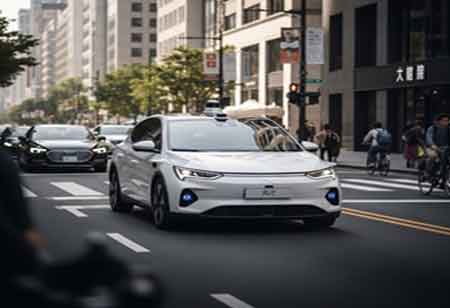THANK YOU FOR SUBSCRIBING
THANK YOU FOR SUBSCRIBING
Be first to read the latest tech news, Industry Leader's Insights, and CIO interviews of medium and large enterprises exclusively from Auto Tech Outlook

By
Auto Tech Outlook | Tuesday, September 02, 2025
Stay ahead of the industry with exclusive feature stories on the top companies, expert insights and the latest news delivered straight to your inbox. Subscribe today.
Fremont, CA: Modern transportation is undergoing a quiet revolution as highly automated vehicles (HAVs) continue to gain traction across the globe. These vehicles promise a future where travel becomes more accessible, efficient, and less stressful. But beyond the technological wonder lies a deeper impact on everyday life. Communities, city planners, and drivers are paying closer attention to the subtle yet transformative ways HAVs are beginning to reshape the human experience on the road. While not without challenges, the potential benefits reflect a shift toward smarter, safer, and more inclusive mobility systems.
Enhancing Road Safety and Reducing Human Error
One of the most compelling aspects of HAVs is their potential to reduce the risks associated with human error. Fatigue, distraction, and impaired judgment are too common in traditional driving scenarios. Highly automated systems, operating with advanced precision, are designed to remain focused, consistent, and compliant with traffic regulations—traits that rarely falter under pressure.
These vehicles promise safer roads by maintaining a steady awareness of their environment. Decision-making processes are driven by data and sensors rather than human impulses, which could reduce sudden lane changes, missed signals, or risky overtaking. The outcome is fewer incidents and less strain on emergency response systems and healthcare infrastructure tied to road accidents.
Expanding Accessibility and Mobility for All
Mobility is essential for independence, yet it remains challenging for many individuals due to physical, cognitive, or age-related limitations. HAVs introduce new opportunities for inclusive transportation, bridging a crucial gap for those who have historically faced mobility barriers.
Automated systems can be tailored to assist passengers struggling with traditional controls or navigation. This shift fosters dignity and autonomy while reducing reliance on caregivers or public transport systems. Additionally, communities with limited transportation options could experience improved connectivity, opening access to jobs, education, and services that were previously out of reach.
The design of these vehicles often incorporates user-friendly interfaces, which contribute to greater confidence and comfort. The implications are profound for aging populations or those living with disabilities. With HAVs, mobility is no longer dictated by the ability to operate a vehicle manually but by the capacity to benefit from smart, shared, or personal transport options.
Improving Traffic Flow and Urban Efficiency
Congestion is a daily frustration in many urban environments, with ripple effects on productivity, fuel consumption, and overall well-being. HAVs, with their ability to communicate and coordinate with one another, offer a pathway to more synchronized and efficient traffic patterns. These systems can maintain optimal spacing, regulate speeds, and reduce the bottlenecks that human drivers often create through hesitation or aggression.
In a broader sense, automated fleets' consistent behavior could influence future cities' design. With more predictable traffic flows, planners may find new flexibility in infrastructure, allocating more space to pedestrians, bikes, or green areas. The potential to decrease traffic noise and emissions further contributes to improved quality of life in dense urban centers.
 Copyright © 2025 AutoTech Outlook. All Rights Reserved | Privacy Policy | Subscribe | Sitemap | About us | Feedback Policy | Editorial Policy
Copyright © 2025 AutoTech Outlook. All Rights Reserved | Privacy Policy | Subscribe | Sitemap | About us | Feedback Policy | Editorial Policy 



